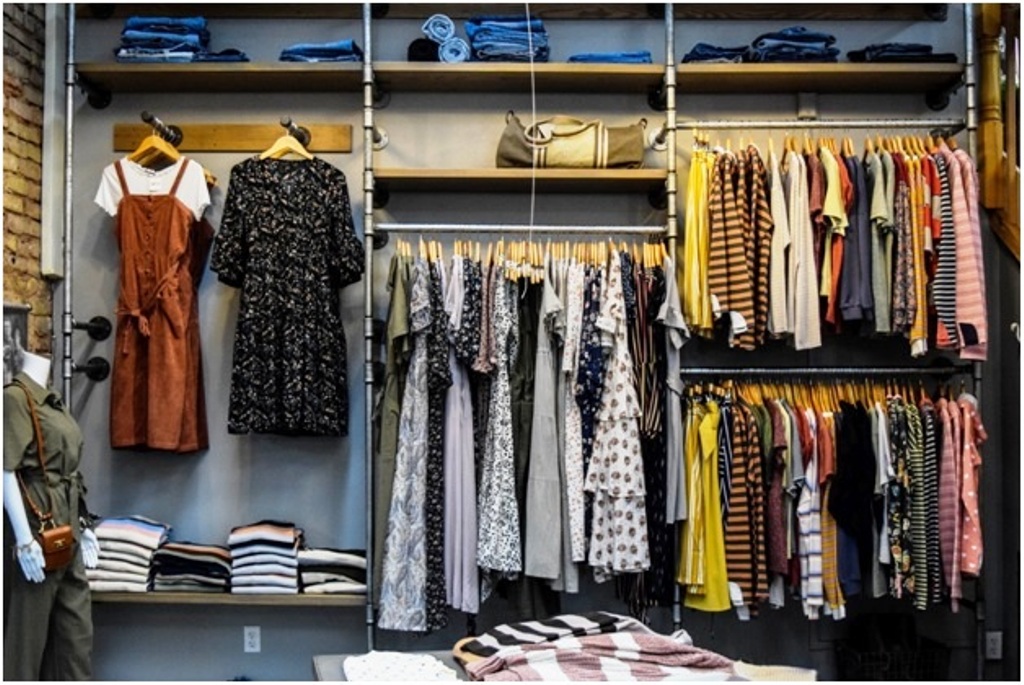Physical Address
304 North Cardinal St.
Dorchester Center, MA 02124
Physical Address
304 North Cardinal St.
Dorchester Center, MA 02124

It’s fascinating to see how different historical events have influenced and changed how people have dressed over time. Some of the most popular fashions are classics; they can withstand the test of time and rarely “go out of style,” only undergoing minor changes to stay current. Other clothing items could be considered “fads,” or styles that are popular for a short period of time and then disappear. Fashion trends are frequently influenced by the preferences of specific groups of people or cliques, and are usually associated with social status or cultural preferences such as the type of music a person prefers.
Skirt and dress fashion trends have changed and varied dramatically from the 1920s to the present, as well as within each decade. Only a few years after World War I, skirt and dress hemlines rose and waistlines were lowered to the hip in 1920. These changes coincided with the boyish flapper fashions that defined the Roaring Twenties as a decade of decadence and fun. Hemlines were said to be at their longest from 1926 to 1928, but once the stock market crashed in 1929 and the Great Depression hit, hemlines shrank back to a more conservative length.
During WWII, luxurious fabrics such as wool, silk, and nylon were strictly controlled, and women’s skirts and dresses were frequently made of viscose and rayon. Due to the illegality of using excess fabric when making an outfit from about 1942 to 1947, skirts and dresses were also made out of anything that could be found within a home (such as curtains, nightgowns, or bed sheets).
Glamor became fashionable again during the 1950s economic boom, and A-line and pencil skirts were very popular form-fitting fashions. Dresses in the decade were typically knee-length or tea-length, with stylish ruffles or lace accents. Mini-dresses and maxi-length skirt outfits became popular in the late 1950s and early 1960s. Mod dresses with short skirts and brightly colored patterns became popular. Mary Quant, a Mod fashion designer, is credited with inventing the iconic mid-sixties mini-skirt.
Fashion evolved once more as we entered the 1980s. Skirts and dresses were longer, with straighter lines and a more serious design. As more women entered the professional workforce, business suits with straight conservative skirts and broad shouldered, boxy blazers became a trend for women.
Women’s shoes in the 1920s had high and wide heels, whether they were pumps or loafers. As a sign of femininity, many women would wear heeled shoes with their swimming costumes. Oxfords in a variety of styles and colors were also popular among both men and women, as were lace-up boots. Strapped heels and pumps were popular in the 1930s, while more traditional styles of heels were still worn.
Laced leather leisure shoes for men and women were popular for outdoor activities and exercise during the decade. As a result of the war, shoes became more conservative and practical in the 1940s. Women’s shoes were typically made with lower heels and cork or wooden soles.
Women wore flat shoes, sandals, heels, and pumps with rounded toes and feminine lines in the 1950s. Both men and women wore saddle shoes, which were white lace-up shoes with brown or black leather accents. Men wore canvas basketball shoes (high-tops) or black leather oxfords.
Suede shoes were also popular during this time period. Black slip-on boots (most likely made of leather or faux leather) were popular for both men and women in the 1960s, and pumps’ heels became thinner. The 1970s saw the popularity of vinyl boots, moccasin-style loafers with wide heels, wedge heels, and slip-on heels with leather cut-out patterns. Both men and women preferred sandals and western-style cowboy boots.
Pumps became more popular in the 1980s when they were designed with higher and thinner heels than in previous decades. Tennis shoes (both high-tops and standard ankle high shoes) and leather dress shoes were very popular for casual wear.
Flats became popular as well, particularly among working women. By the 1990s, fashion had returned to earth, and the casual look was in vogue. Due to environmental concerns, leather substitutes became more popular during this decade, and cork-soled sandals such as Birkenstocks defined the alternative look early in the decade. Walking shoes had larger heels, and most people wore gym-style athletic shoes on a daily basis. Branding, as it was in the late 1980s and early 1990s, became a driving force in shoe sales. People would proudly display their Reebok, Nike, or Adidas shoes, and limited editions would fetch hundreds of dollars.
What do the numbers on Air Jordans mean? The majority of Air Jordans bear the edition number 1-35. Since the Air Jordan 1 debuted in 1985, there have been 35 editions, each numbered sequentially, with a new one released about once a year.
The first Air Jordan shoe was designed for Hall of Fame basketball player Michael Jordan while he was with the Chicago Bulls in late 1984, and it was released to the public on April 1, 1985. Nike’s shoes were designed by Peter Moore, Tinker Hatfield, and Bruce Kilgore.
Michael Jordan is widely regarded as one of the all-time great athletes.
He was a four-time gold medalist with USA Basketball, including two Olympic golds, and was named Male Athlete of the Year twice. If you’re looking for air jordan, go to Air Jordan 1.